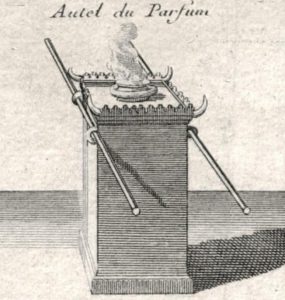The incense offering at the Tabernacle and at the Temple in Jerusalem consisted of a couple of different fragrant spices that created a strong fragrant aroma, as written in the Book of Exodus:
“The LORD said to Moses, “Take sweet spices, stacte, and onycha, and galbanum, sweet spices with pure frankincense (of each shall there be an equal part), and make an incense blended as by the perfumer, seasoned with salt, pure and holy. (Exodus 30: 34-35)

In the original Hebrew it did not mention specifically ‘sweet spices’ but rather ‘fragrant spices’ (‘Samim’ {סמים}in Hebrew) and that explains the fact that the ‘galbnaum’ is also part of this list of spice ingredients.
The galbanum – ‘Chelbanah’ {חלבנה}in the original Hebrew, which shares the same root as the Hebrew word for milk (‘Chalav’ {חלב} ) – is known for its bad odor and that raises the question about why was this specific fragrant spice chosen for the blend of the incense?
One of the more interesting interpretations pointed out relates to the other meaning of the original Hebrew word for incense – ‘Ketoreth’ {קטורת} – which means ‘tied’ or ‘binding.’ This concept suggests the lesson which teaches us that even if one did wrong, he or she is still an important and valuable part of the group and is lovingly accepted by God.
